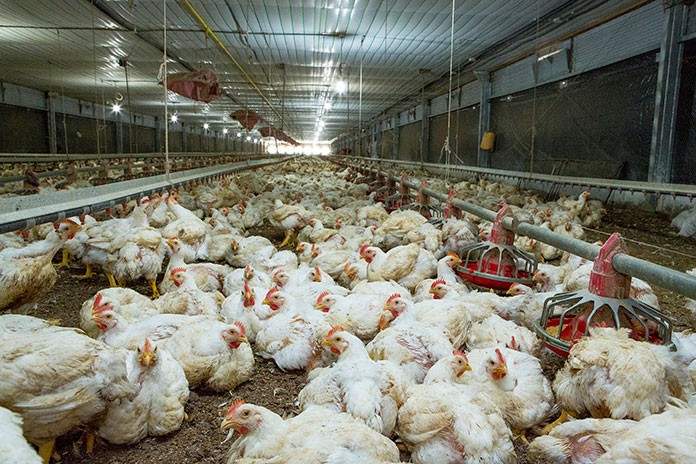
Consumer pressure and government regulations are driving US poultry industry to remove antibiotic growth promoter (AGP) from poultry production.
Nutrition program including feed additives is an integral part of AGP free poultry production. A floor pen study was conducted with 152 day-old male broilers to evaluate the efficacy of probiotic and protease in alleviating the negative impact of mild Eimeria challenge on growth performance and gut health in comparison to Bacitracin Methylene Disalicylate (BMD®).
The study consisted of 4 dietary treatments – Negative Control (NC), NC + probiotic (SPORULIN® containing spores of B. Subtilis), NC + protease (CIBENZA® DP100), and NC + BMD, each with 12 replicate pens of 24 birds. Nutritionally complete typical US corn soybean meal based diets were formulated for starter (0-14 d), grower (14-27 d), and finisher (27-41 d) phases.
All birds were challenged with a coccidiosis vaccine at 10X recommended dose via oral gavage on d 15. Body weight, feed intake, FCR, and mortality were determined on d 14, 21, 27, and 41. On d 28, 3 birds per pen were euthanized to score E. acervulina, E. maxima, and necrotic enteritis (NE) lesions. Data were subject to one way ANOVA; means were separated by Fisher’s protected LSD test. Bacitracin improved (P<0.05) FCR on d 14 (1.144 vs1.220), d 21 (1.294 vs 1.352), and d 27 (1.375 vs 1.426); probiotic and protease improved (P<0.05) FCR on d 14 (1.150 and 1.153 vs 1.220) and d 21 (1.316 and 1.315 vs 1.352), and their effects were not different from BMD (P>0.05).
No significant difference in FCR was observed among dietary treatments on d 41 (P>0.05). Bacitracin increased (P<0.05) BW by 6.0% and feed intake by 4.8% on d 21; probiotic and protease numerically increased (P>0.05) 21-d BW by 3.0 and 2.8% and feed intake by 2.2 and 2.8% to a level that was equivalent to BMD (P>0.05).
No treatment difference in BW or feed intake was observed on d 14, 27 and 41 (P>0.05). Low mortality throughout the trial, minimal coccidiosis and mild NE lesions were observed, and they were not affected by dietary treatments (P>0.05).
In summary, for broilers subject to Eimeria challenge on d 15, while BMD was effective in improving performance up to d 27, probiotic and protease were effective up to d 21 indicating that they have different mechanism of action from BMD, and they could serve as effective nutritional tools to maintain growth performance during certain phases in AGP free broiler production.

















